Kodak Pixpro SP360 4K review: an affordable VR action cam
Want 360-degree 4K video? Then the Kodak Pixpro SP360 4K could be for you
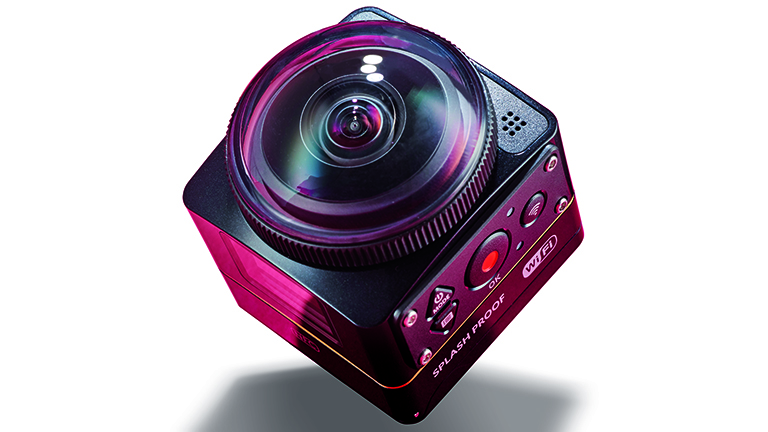
As far as VR action cams go, the PixPro SP360 4K is an admirable stab at the genre.
-
+
Immersive footage
-
+
Easy to use
-
+
Good value for a VR action cam
-
-
Software feels unprofessional
-
-
Movie quality could be better
Why you can trust T3
In the past year, there’s been little action – for want of a better word – on the action-cam scene. But the rough-and-tumble movie-making world is now getting a bit of a shake-up, thanks to the advent of virtual-reality action cams.
If you’re used to filming movies on an action cam, you’ll know that you point at what you want to film, and the camera will capture a flat frame’s worth of image in a set resolution.
Where a VR action cam differs is that it can capture a 360-degree scene – everything that happens around you. Some VR cams, like the 360fly 4K, do this with just one lens, but in those cases you’re limited to a 360 x 240 viewpoint, so detail behind the lens is lost. However, in the case of Kodak’s new PixPro SP360 4K, two cameras are bolted together, the lenses pointing away from each other. This captures every ounce of detail in the image.
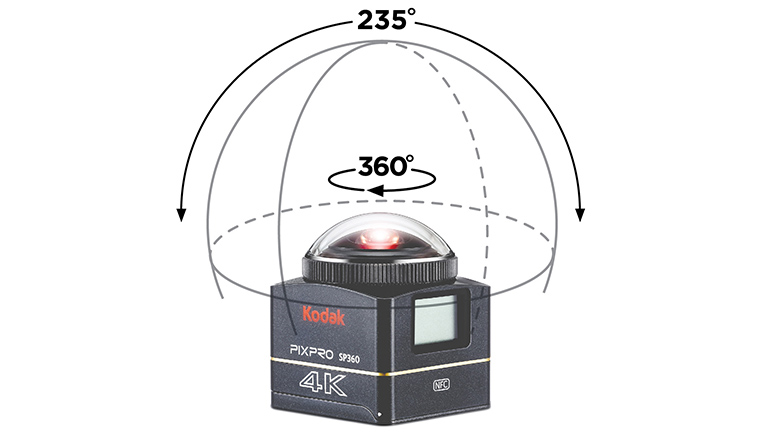
Naturally, this sort of imagery is perfectly suited to VR – don a pair of glasses and you’ll feel like you’re actually there, experiencing the action first-hand. Or, at least, that’s the idea.
It’s not the first time Kodak has brought a VR action cam to market – a year ago, the SP360 arrived sans 4K resolution and full spherical action; with just one camera, you were limited to a 360-degree hemisphere. Admittedly, it was a tad too early to the VR game to get much love, and the relatively low quality meant that it didn’t look that impressive up against the stalwarts from GoPro.
But the SP360 4K looks set to address these shortcomings, firstly with a significant boost in resolution and secondly with full, spherical immersion. And the timing is perfect – the market couldn’t be more ready for VR; you can get a pair of VR glasses for pennies these days, so anyone can watch VR video. The question is, does it all actually work, and would it persuade you to part with your regular action cam?
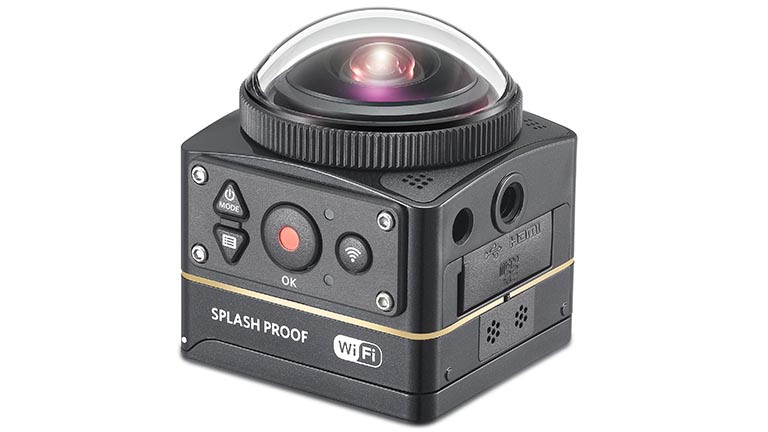
The SP360 4K comes in two flavours – either a single pack or a dual pack, the latter of which we tested. As the name suggests, the dual pack comes with two identical cameras, giving you full spherical-video capture while the single manages only half of that. Presumably, the single pack gives you a chance to dip your toes into the VR water, with the option of buying another camera at a later date.
The single pack comes in a variety of types, sporting different accessories – the Extreme version, for example, provides you with an underwater case, among other handy extras. If you go for the dual pack, you get the advantage of a wrist-mounted remote control – worth having, in our opinion – but mounting options are limited to a suction mount (great for car bonnets) or an extending selfie-type stick.
Accessory shortage
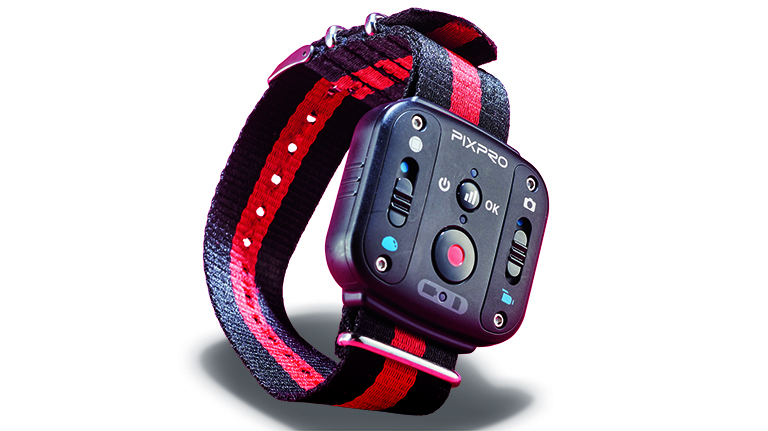
Presumably, the lack of available accessories – if you already own a GoPro, you’ll be used to having loads of choice – is a practical thing. With two cameras bolted together, some of the mounts simply wouldn’t work – for instance, a chest mount would be pretty useless with your body blocking much of the view you want to capture. That, or Kodak simply hasn’t got around to expanding its range yet. With this in mind, if you’re planning to do more extreme video capture, you might be better off with the single pack.
A shade under £750 for the dual pack might seem like a huge wedge of cash, and it is, but consider this – VR action-cam options are pretty limited at present. The GoPro Omni costs an eye-watering – nay, wallet-emptying – £4,199. The Omni may deliver three times the resolution, but considering it does virtually – so to speak – the same thing, the SP360 4K is great value for money.
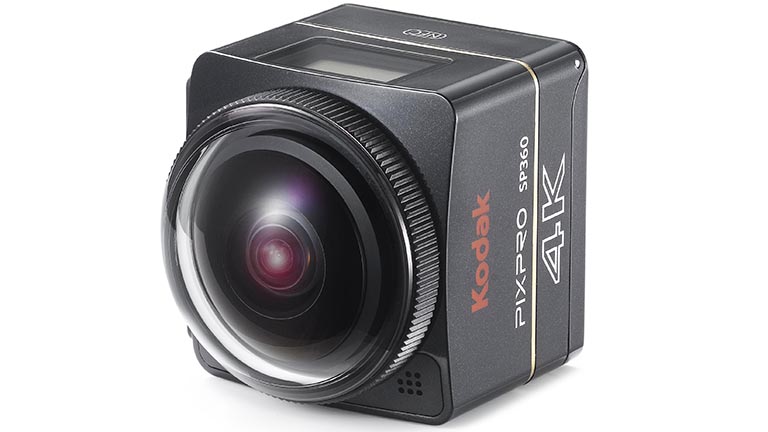
The SP360 4K is the more practical proposition, too, taking up far less space on your person. It’s a chunky-looking little thing, though; it certainly won’t win any hearts or minds with its functional design. You get a simple set of controls on one side, an LCD on the other, and access to the ports and memory-card slot underneath a plastic tab. The case is splashproof, but you’ll need an underwater case for proper wet-weather activities.
Overall, the build quality feels pretty solid, though in practice we found the buttons to be a little flimsy at times – particularly the record button, which would occasionally get slightly stuck within the housing; annoying when you’re trying to shoot quickly.
The LCD screen is tiny, too, which makes reading on the fly a little tricky. Thankfully, the menu is easy to use – one button deals with the type of capture, whether it’s shooting video or taking pictures, and the second button is for changing settings. A Wi-Fi button is also present, letting you connect to a smartphone or PC.
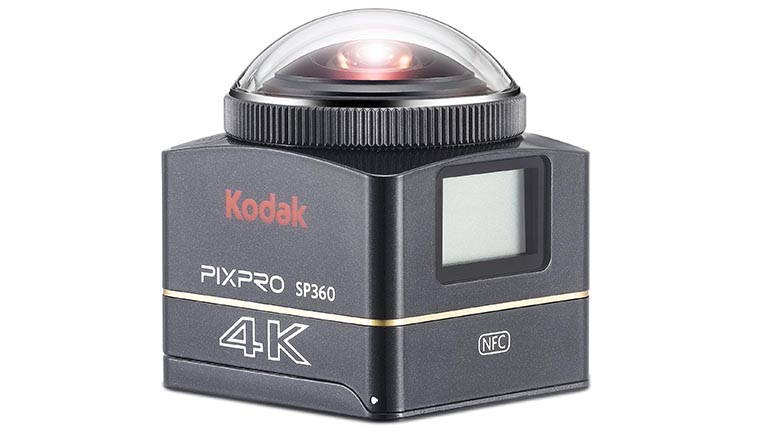
The party piece of the user interface is the remote control, which can be mounted on your wrist or on the selfie stick via a clip mount. With it paired to the camera, you’ll have quick access to the major controls.
The great thing about the camera is that it goes into auto-standby when you tap the record button, and will wake again upon another tap, saving you precious battery – though we found it still eats through it a little too eagerly. Quick charging helps here.
Software issues
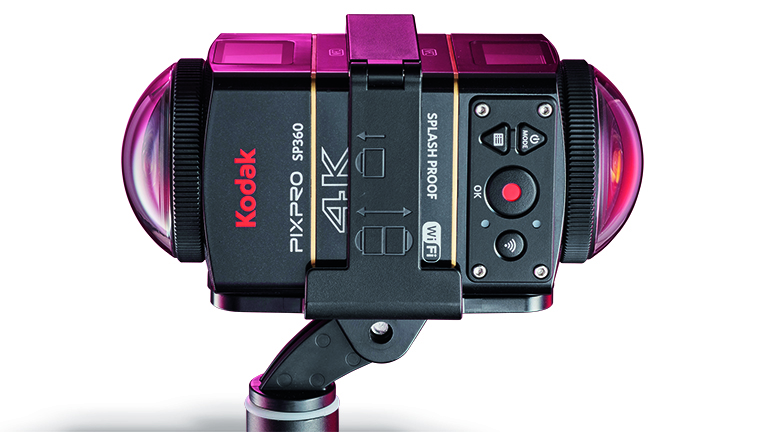
Pairing two cameras takes a little longer, but once you’ve got the hang of it, it’s pretty straightforward. It’s also essential for proper syncing of dual-camera movies so that you can accurately stitch them together later.
Which brings us to the software side of the SP360 4K. This feels very much at odds with the camera – it’s just not that good. If you’re planning to edit via a PC or Mac, you have two separate programs to download and install – one for editing videos and one for stitching two videos together – and neither are great, lacking polish. They’re not very easy to use, either.
There are no help guides within the software, so you just have to fumble your way around until you figure out what to do. Oddly, the user manual lacks any kind of guidance in this area; it’s an unusual omission.
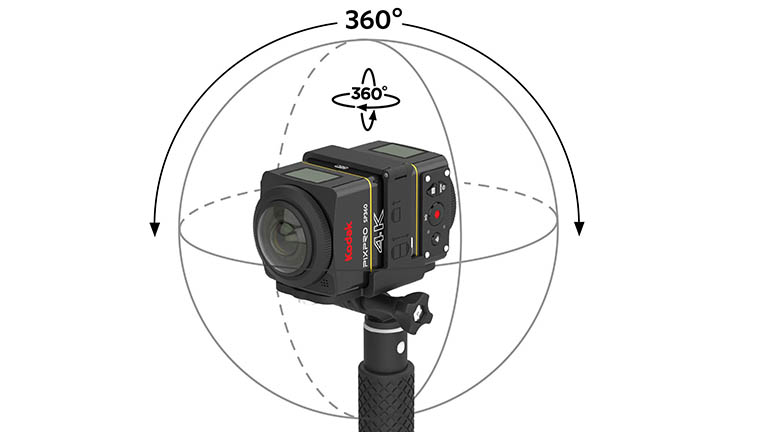
The mobile app – available for Android and iOS – does much the same thing but is a little more refined, and a mite more intuitive. Happily, you can connect to it via Wi-Fi (NFC, too, if you’re rocking an Android handset), which makes for easy adjustment of settings, as well as playback and setting up your shotsbefore you start filming.
So, does the PixPro SP360 4K deliver the goods, and will it persuade action fans to convert from their GoPros? Here at T3, we love a bit of action-movie making, and we had mixed feelings upon viewing the results. Sure, you get a brilliant new perspective for viewing action movies, but even with the power of double 4K, the quality isn’t going to rival the static image you get from a regular 4K action cam, so you’re left underwhelmed. We had good results from flat 4K and 1080p movies, though if you like to edit in slow motion, you’ll find the high-speed 120fps 720p offering disappointing.
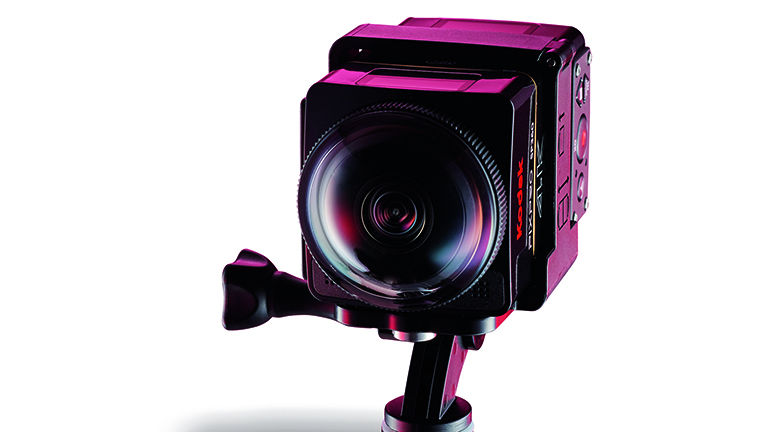
It’s good, just not exactly awe-inspiring. Of course, having to cover such a huge amount of picture real estate, the quality is always going to take a hit; it’s probably why GoPro has settled for three times the number of cameras in its own rig.
Getting two movies stitched together properly can be a little tricky, too. We found that if you move the cameras around while recording, the stitch line will go completely off. If you hold it still while moving, it’s better, though you’ll never get it to perfectly stitch. We’d be happy to live with it for the enhanced immersion.
Verdict
So it all depends what you want to get from your movies. Comparing a brilliant action cam like the GoPro to this Kodak is like comparing apples to oranges – they do a similar thing, just very differently. If you want to record a frame of action in the highest quality possible, the GoPro is a no-brainer; but if you want to bring your action videos to life, the Kodak is a great option, offering incredible depth to scenes. It’s also a relatively inexpensive way of jumping on the VR bandwagon.
Sign up to the T3 newsletter for smarter living straight to your inbox
Get all the latest news, reviews, deals and buying guides on gorgeous tech, home and active products from the T3 experts
T3.com is one of the UK's leading consumer lifestyle websites and T3 magazine is its print counterpart. You can follow us on Twitter, Facebook and Instagram.
We present products in helpful buying guides and carefully curated deals posts across style, living, auto, smart home, watches, travel, fitness and more. We're delighted that 38,000 people buy a copy of T3 magazine every month.
-
 Under Armour's new sneaker doesn't play by the old rules
Under Armour's new sneaker doesn't play by the old rulesIf this is the future of the brand, it's off to a running start
By Matt Kollat Published
-
 YETI just made bowls cool – literally. And also figuratively.
YETI just made bowls cool – literally. And also figuratively.New YETI design, same bear-proof energy
By Matt Kollat Published
-
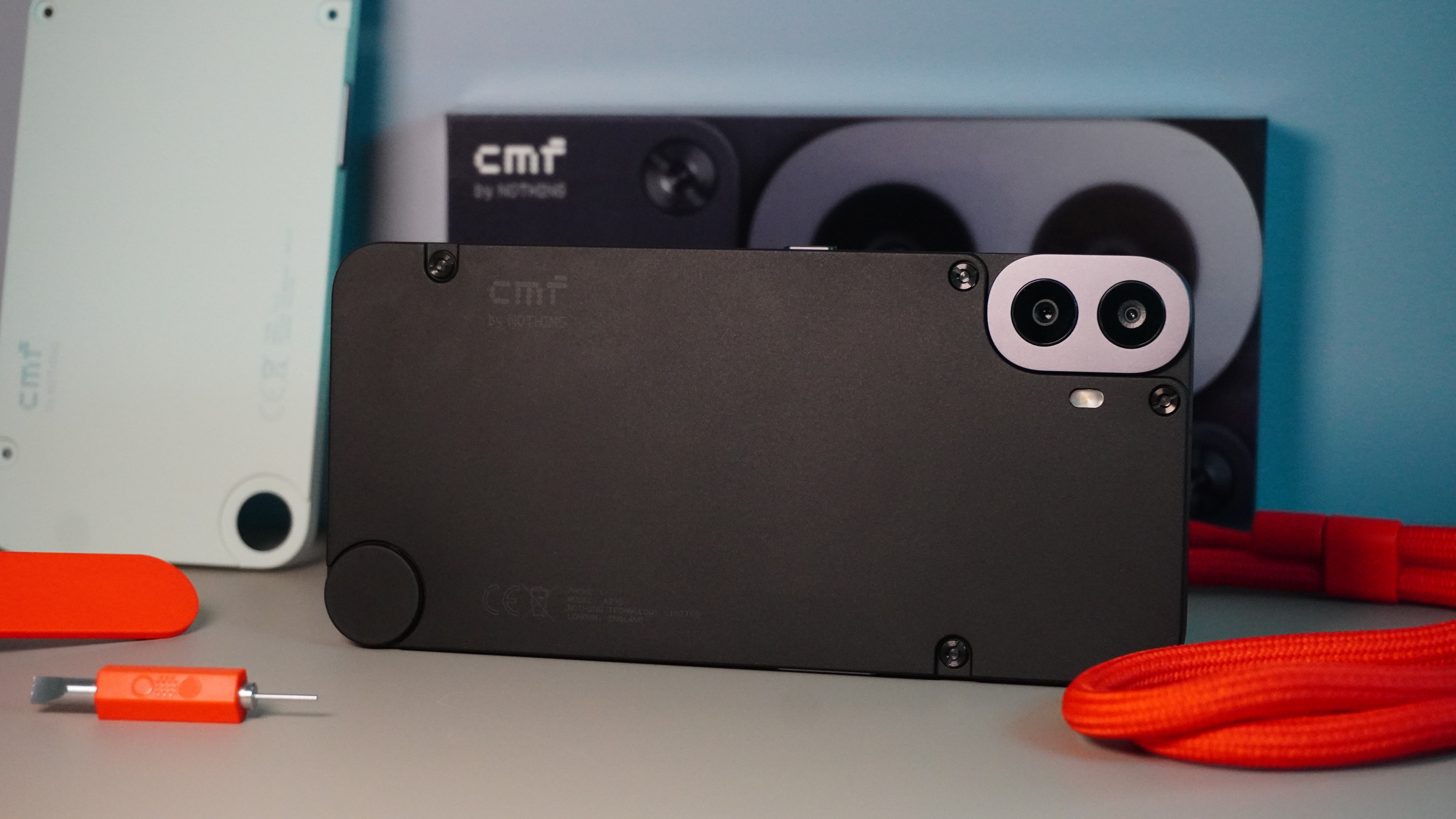 Nothing's next phone could be a budget powerhouse, thanks to this confirmed hardware detail
Nothing's next phone could be a budget powerhouse, thanks to this confirmed hardware detailOfficial details reveal more about the next phone coming from Nothing
By Chris Hall Published